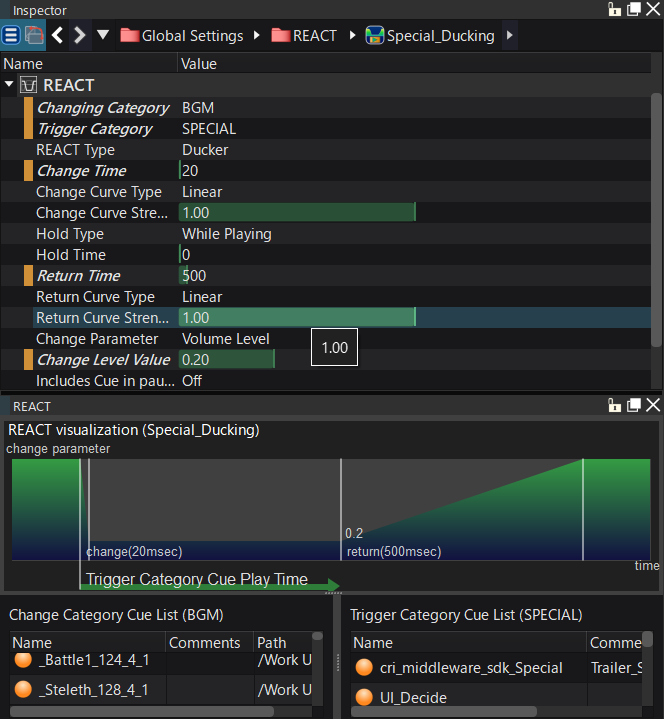 |
CRI ADX
Last Updated: 2025-05-07 13:34 p
|
 |
CRI ADX
Last Updated: 2025-05-07 13:34 p
|
In a game - where sound is played back interactively instead of linearly - it may sometimes be difficult to adjust the volume.
| Problem | Situation | Result |
|---|---|---|
| You want to emphasize an important sound. | Many other sounds are being played. | Even if you increase the volume of the important sound, still mixed with other sounds. The sound cracks and is hard to hear. |
However, by using REACT, you can temporarily lower the volume of the sounds from the other Categories. This is called a ducking effect.
You can specify the volume change over time, the trigger that starts the ducking, as well as which Category should have its volume lowered.

Three time ranges are specified to use the Ducker.

It is the time between the start of the triggering Cue and when the "change parameter" value reaches "change level value".
You can specify the mapping curve the level value will follow.
It is the time where the level value is hold, once the changing time is over. There are two types of hold.
| Type | Description |
|---|---|
| During playback | Maintain the level value until the trigger Cue stops. Even after the trigger Cue is stopped, the level value is maintained during the holding time. |
| Fixed time | Regardless of the stop state of the Cue, the level value is maintained during the holding time. A value of 0 will instantly transition to the "returning time". |
This is the time it takes for the level to reach back its initial value (before the trigger Cue was played back).
You can specify the mapping curve the level value will follow.